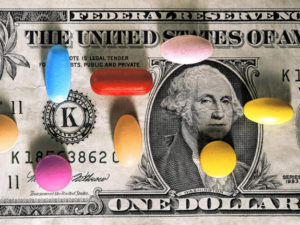 Having insurance doesn’t guarantee you the lowest cost on your medications. This article from GoodRX walks you through the research steps to help you control your costs.
Having insurance doesn’t guarantee you the lowest cost on your medications. This article from GoodRX walks you through the research steps to help you control your costs.
Employer Paid Insurance
 Polls continue to show that Americans are concerned about the rising cost of health care and health insurance. Having employer paid coverage doesn’t eliminate the concern. This article discusses the issue.
Polls continue to show that Americans are concerned about the rising cost of health care and health insurance. Having employer paid coverage doesn’t eliminate the concern. This article discusses the issue.
Eye Safety
 Be safe New Year’s Eve! Here are tips on opening champagne bottles safely.
Be safe New Year’s Eve! Here are tips on opening champagne bottles safely.
Toy Safety
 Don’t forget “safety” when you’re shopping for children. Here are some tips from the American Academy of Ophthalmology.
Don’t forget “safety” when you’re shopping for children. Here are some tips from the American Academy of Ophthalmology.
Healthy Skin Month
November has been designated as healthy skin month. Skin that is healthy is hydrated, free of active acne and skin cancer. There are a few basic things that can be done on a daily basis to keep your skin healthy and glowing. Using good products at home and getting regular treatments from a skin care professional are good ways to achieve healthy skin that you feel good in.
 It is important to have a good daily routine that includes 3 basic steps: cleanse, moisturize and protect. It doesn’t have to be complicated. Use a gentle cleanser and wash your face every morning and night. Follow that up with an appropriate moisturizer for your skin type. For day time, always wear sun protection. SPF 30 is best. Reapply throughout the day. This will protect your skin from sun damage and skin cancer.
It is important to have a good daily routine that includes 3 basic steps: cleanse, moisturize and protect. It doesn’t have to be complicated. Use a gentle cleanser and wash your face every morning and night. Follow that up with an appropriate moisturizer for your skin type. For day time, always wear sun protection. SPF 30 is best. Reapply throughout the day. This will protect your skin from sun damage and skin cancer.
Depending on your skin health, you may want to see a licensed esthetician. This is someone with extensive training in skin care and skin health who is qualified to do a skin analysis and come up with a plan utilizing advanced skin care treatments. It’s a great way to get educated about your skin and learn the best products for your individual skin type. The services an esthetician can perform are many: hydrating facials, microdermabrasion, dermaplaning, peels and enzyme treatments are all great services that get amazing results and can help with acne, dry skin, age spots, sun damage and many other skin conditions.
Rachel Cunningham is a licensed esthetician and the owner of Waxetera in Mesa, AZ. www.waxetera.com
- « Previous Page
- 1
- …
- 30
- 31
- 32
- 33
- 34
- …
- 46
- Next Page »
